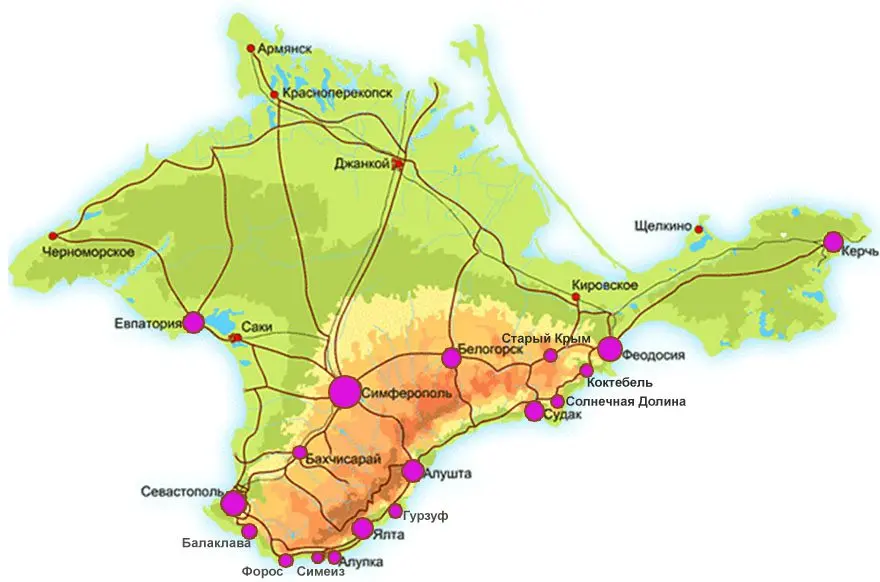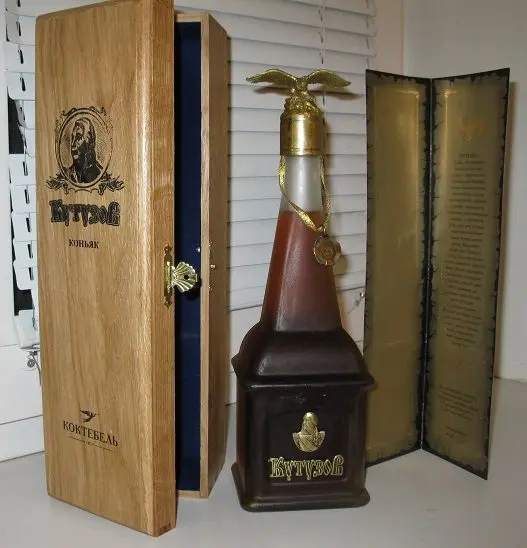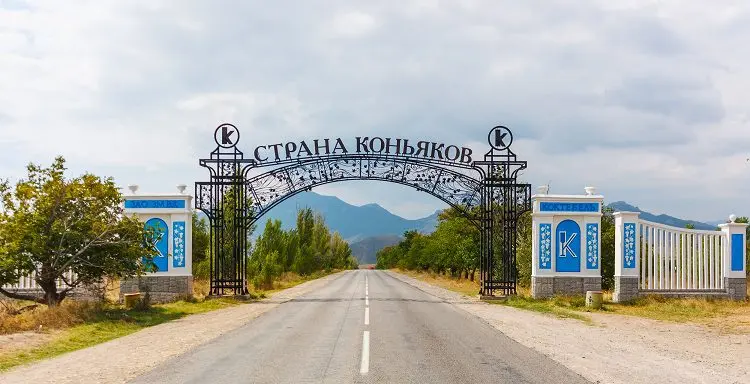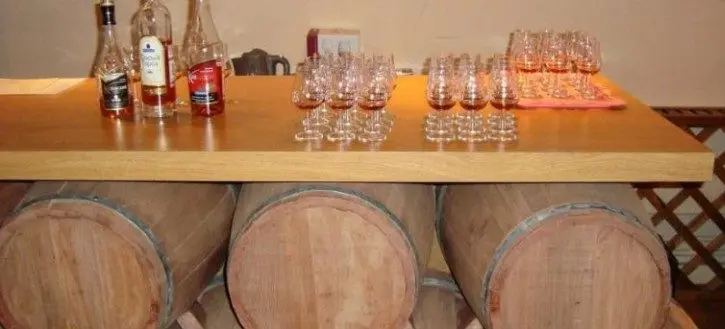“Crimean cognac” is the same oxymoron as “Soviet champagne”, since real cognac is produced only in the French province of the same name. Strictly speaking, outside of the Cognac region, any drink can only be called brandy, no matter how thoroughly the technology is observed and the proportions are maintained. However, we will still call the cognacs of the Crimea by this term, and not brandy, not least because at international exhibitions, many representatives of the peninsula turned out to be no worse than the French “original”.
Historical reference. To simplify, cognac is distilled (distilled on a special moonshine still – alambika) wine, therefore, speaking of production, you need to start with winemaking. It is difficult to say when grape juice began to be fermented on the territory of the Crimea – it is clear that this happened several thousand years ago in the Greek colonies. In the mild climate of the peninsula, both autochthonous grapes and imported European varieties ripen well. Brandy production was a logical step in expanding the range of local winemakers.
Despite the fact that the names of Crimean cognacs are known to any connoisseur from the post-Soviet space, the production of grape distillate in these territories began late, only in 1961, before that the main emphasis was on wines. The party elite ordered to launch the production of Soviet brandy. Two wineries have started experiments: Koktebel and Simferopol. The first one turned out to be more successful, after 4 years a domestic three-star cognac entered the market. In 1967, on the 50th anniversary of Soviet power, Koktebel brandy was released.
In Crimea, cognac is made from white varieties of Aligote, Rkatsiteli, Ugni Blanc, Folle Blanche, Montil, Colombard and some others. First, dry wine is made from the berries, which, after double distillation, turns into cognac spirit. To become a real cognac, the drink still needs to be aged in oak barrels and blended (mixing) grape spirits of different aging periods.

Winemakers claim that the taste of Crimean cognac is due to a combination of local wine materials and traditional technologies. If you import berries from other regions, the bouquet will be different. In 2014, manufacturers had to reorient themselves to Russian legislation and develop a new sales market, which caused a two-year crisis and a decrease in production. However, in 2016, wineries began to gradually return to their previous indicators.
Classification
Crimean cognac is of three types:
- Ordinary (aging 3-5 years in stainless steel tanks with oak bars).
- Vintage (aging 6-50 years in oak barrels).
- Collectible (vintage, additionally aged, these are the best brands with unique organoleptic characteristics).
Asterisks indicate the number of years of aging of an ordinary cognac (the average age of all blend spirits is taken).
When marking, the Soviet, not the French, classification is used:
- KV – aged vintage (6-8 years);
- KVVK – aged of the highest quality (8-10 years);
- KS – old (10-12 years old);
- OS is very old (13+ years old).
Names of Crimean cognacs
The recipe, production method and equipment depend on the specific manufacturer. Someone follows the ancient traditions laid down back in the 20th century (like the Magliv plant), others focus on quantity and cheapness instead of quality, preferring an accelerated and simplified procedure. In total, there are more than XNUMX cognac producers on the territory of the peninsula, but most of the brands are little known. Let’s talk about the largest and most prominent enterprises.
1. Plant “Koktebel” – the main and oldest production of Crimean cognacs, produces both ordinary and vintage, and collection varieties.

Cognac “Kutuzov” 25-year-old blind testing in Paris turned out to be better than the famous “Napoleon” cognac house Courvoisier (one of the three most famous cognac houses in France), giving rise to a lot of jokes and puns on this score.
“Koktebel” has a network of branded stores and tasting rooms. During its operation, the enterprise has received more than 170 awards, diplomas, prizes and medals both at domestic and international exhibitions and events.

2. Bakhchisaray is a full-cycle production from growing grapes to aging in barrels, specializing not only in cognacs, but also in wines, vermouths, ciders and other types of alcohol.
The plant was founded in 1963, produces three series of brandy: “Bakhchisarai”, “Legends of Ai-Petri”, “Old Crimean”. Production and vineyards are located in Bakhchisarai – a city with a unique climate, ideal for grape ripening. Local berries absorb the aromas of lavender, roses, sage, and transfer these tones to cognacs.
3. “Emerald” – Dzhankoy plant, produces inexpensive cognac in souvenir packaging. So far, the products of this brand are little known on the world and Russian markets, but there is potential for growth.
4. “Simferopol Wine and Cognac Factory” – ordinary cognacs are made using express technologies and are not of high quality, but vintage varieties are blended with French and Spanish spirits. It is here that the famous cognac “Ai-Petri” is produced.

5. “Golden Amphora” – produces inexpensive cognacs “Jean-Jacques” with a seasoned mild taste. This brandy is considered one of the most budgetary and therefore popular, but it is significantly inferior in quality to its competitors.
6. “Magliv” – produces the famous brand “Magarach”, for some products it uses the French classification. The production uses the Charente method of distillation in traditional copper stills, as in France.

The plant is located near Alushta and was once just a private production of professor of medicine Golubev. In 1879, the estate “Castel-Primorsky” was located here, producing table wines, nutmeg, liqueurs and ports. In Soviet times, the estate was turned into a state farm, and in 1992 the enterprise was reconstructed and acquired its current form.
7. Massandra is a well-known Yalta winery that also produces cognacs. The company arranges organized tours of production and wine and cognac tastings.
Travel Tips
Any Crimean alcohol is often counterfeited even on the territory of the peninsula itself, so do not buy wine or cognac from your hands, go to specialized branded stores.
In addition, “alco-tourism” is well developed in the Crimea, almost all production facilities have tasting rooms. Do not take a pig in a poke, first try what this or that winery offers, and only then shell out.

Geography of tastings:
- Alushta (wineries “Alushtinsky”, “Tavrida”, a network of wine stores “Vintorg”, a store “Wine and cheese”).
- Koktebel (winery of the same name and shops belonging to it).
- Yalta (Massandra Winery, Magarach Institute).
- Bakhchisaray (winery of the same name, “Golden Amphora”).
The list is far from complete: there are many small industries in Crimea, so it always makes sense to “orient yourself in the area” – ask already upon arrival if there is a tasting nearby.
How to drink Crimean cognacs
Ordinary cognacs go well with meats, olives, lemon sprinkled with sugar, smoked fish, caviar, yellow cheese.
Vintage varieties are eaten with bitter chocolate, grapes, washed down with coffee.
Collection cognacs do not interfere with anything, so as not to spoil the taste. Such drinks must be served in special glasses-snifters.









